|
The Dawn
of the Electrical Age
This period represents the time of
the earliest explorations into the nature of electricity.
Scientists focused on fundamental questions such as: What is
electricity? Is it different from magnetism? Are lightning and
electricity the same thing? Why do certain things behave the way
they do?
|
|
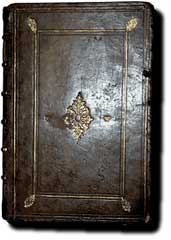 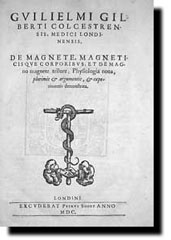
De Magnete,
Magneticisque Corporibus, et de magno magnete tellure; Physiogia
nova, plurimis et arguementis et experimentis demonstrata
William Gilbert
1600
The first book on
electricity and magnetism, considered one of the greatest books in
the history of science. |
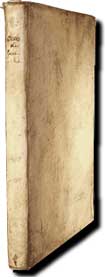
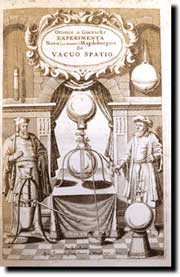
Experimenta Nova (ut vocantur) Magdegurgica de Vacuo Spatio
Otto
von Guericke
1672
A very important
and influential book. Von Guericke
invents the vacuum pump and the first machine for producing
electricity. |
|
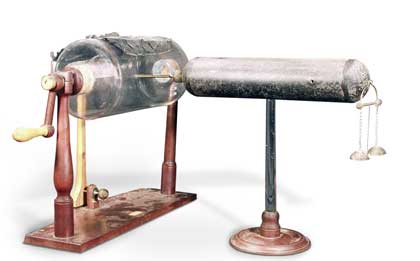
Nairne-style Friction
Machine
Mid 19th Century |
|
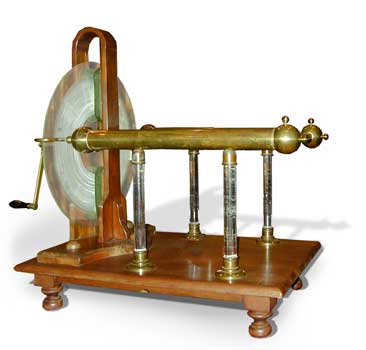
Ramsden Friction Machine
4th Qtr, 18th Century |
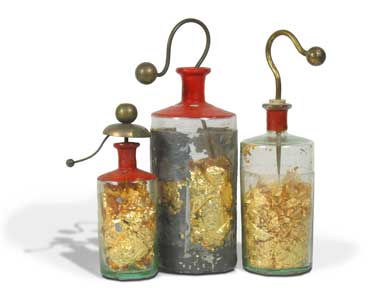
Leyden Jars
18th Century
Invented in 1746, the Leyden jar was
the first device capable of storing electricity. Known today
as capacitors, the jars made a host of new experiments
possible. |
|
Electricity Sparks Innovation
The
question on the minds of researchers during this period was: What
can we do with electricity? It all began with the invention of
the electric battery by Allessandro Volta in 1800, and everything
started to come together as Ampere's theories were applied by
Michael Faraday to develop the electric motor. William Sturgeon and
Joseph Henry's explorations of electromagnetic theory made it
possible for Wheatstone to develop the first primitive but
functional telegraph. |
|
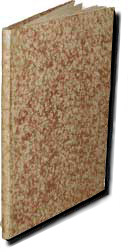
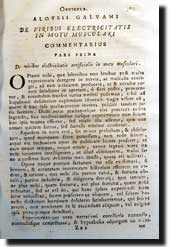
De Viribus Electricitatis in Motu Musculari
Luigi Galvani
1791
The
discovery of direct current |
|
|
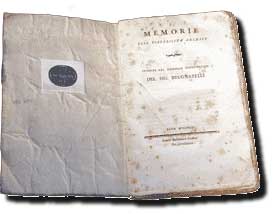
1792 - Memorie sull Elettricita Animale Inserite nel Giornale
Fisico-Medico
Alessandro
Volta
1792 |
The invention of
the electro-chemical battery
|
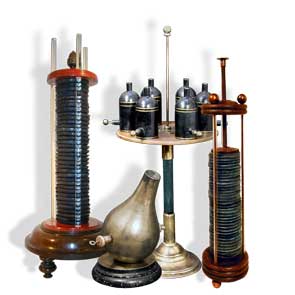
Volta Piles, Volta Cannon
1st Qtr 19th Century
In 1800 Allesandro Volta developed
the voltaic pile, a forerunner of the electric battery. The pile
consists of a number of discs of zinc and copper separated by pieces
of wet cloth and arranged in a vertical column. This was the first
device to produce a steady stream of electricity and could operate
for decades. In 1777 Volta was
interested in the characteristics of swamp gases. In order to test
flammability he invented his cannon (above, right). He would collect
swamp gas and fill the cannon with it. The cork on top would be put
in after it was filled, to keep the gas from escaping.
If the gas were
flammable, and the proportions right, it would explode when sparked.
Volta's early cannons were capable of sending a lead ball twenty
feet. |
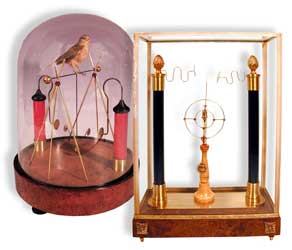
Early Perpetual Motion Machines
1st Qtr 19th Century
In the beginning
of the 19th century, the abbot Zamboni, an Italian physicist,
developed a method of making Volta Piles (Early batteries) by using
very thin metal foil and paper. Using this method he was able to
create piles of over 2000 layers that stood less than 12" tall.
Batteries of such a high voltage created an electrostatic charge on
their terminals. Taking advantage of this , Zamboni manufactured an
instrument composed of two Volta piles alternatively attracting a
pendulum situated between them. The mechanism formed the basis for
the first electrostatic clocks. Some say these "perpetual motion"
machines worked non-stop for more than 100 years. These very rare
pieces formed the earliest research on very high voltage batteries
and today only a few examples survive. |
|
Bréguet's
ABC (Dial Telegraph) 1850 - 1870
Bréguet's telegraph, was invented by
Louis-François-Clement Bréguet (1804-1883), a watchmaker and physicist.
The set operates by sending a series of pulses representing each
letter or number, much like a dial-type telephone.
For more information on the Bréguet telegraph,
see:
http://chem.ch.huji.ac.il/~eugeniik/history/breguet.html
|
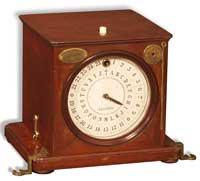 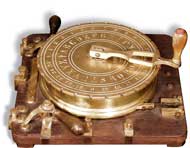
Bréguet's ABC, or Dial Telegraph,
Receiver (left) and Transmitter (right) |
Hughes Telegraph
Dumoulin - Froment a Paris
Mid 19th Century
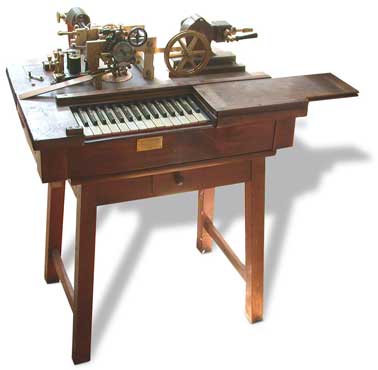 |
Many people are not aware that
Morse didn’t invent the telegraph. What he did was invent a
particular form of electromagnetic telegraph – one that was
elegantly simple and required little maintenance. He (or rather his
assistant Alfred Vail) also developed the Morse code. In the early
days of the telegraph there were many other attempts to develop
methods of communication by wire, and one of these, the Hughes
Telegraph, was especially unusual.
What makes the Hughes unique?
On the sending side, instead of using a Morse key, the operator uses
a piano key – or keyboard, to be more precise. The
receiver, instead of marking dots and dashes on a paper strip,
actually spells out the text of the message. This was quite unusual
for the time.
These
devices were very popular in France, where there were likely many
more piano and harpsichord players than telegraphers. The piece we
have in the museum was operated on the Paris-Milan line.
Unfortunately they were quite temperamental and suffered frequent
breakdowns. Transmission speed was also much slower than the Morse
system and so the Hughes system was eventually replaced by the much
simpler (and cheaper) Morse apparatus. Very few survive today.
|
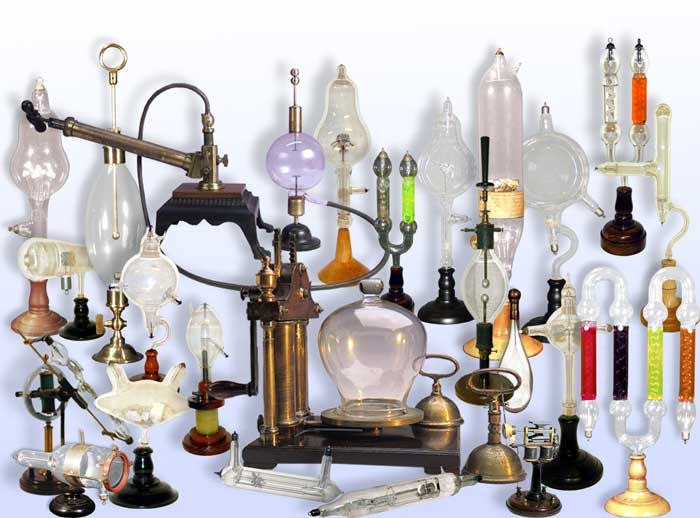
Early Vacuum Pumps with various
Crookes and Geissler Tubes
|
|
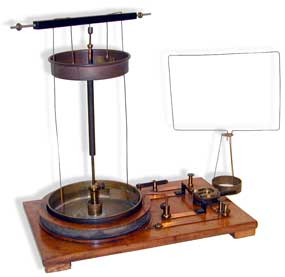
Ampere Table
1890
Named for
André-Marie Ampère,
(1775 - 1836) This is
an early model of the same apparatus constructed by Ampere for his
famous experiments on the relationship between magnetic fields and
electric current. |
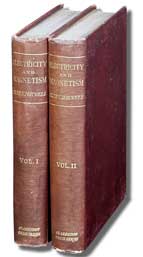
Treatise on
Electricity and Magnetism
James Clerk Maxwell
1873
The theoretical prediction of
radio waves |
|
The
Beginnings of Radio
In
1873 James Clerk Maxwell presented his monumental work in which he
mathematically predicted the existence of radio waves. Six
years later a bright young Professor at the Engineering College in
Karlsruhe, Germany, named Heinrich Hertz, confirmed Maxwell's theory
in the laboratory. The attention of physicists world wide was
focused on this new phenomena known as "Hertzian waves", and new
apparatus were created to explore and study it. |
|
|
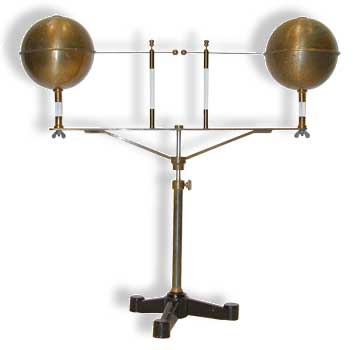 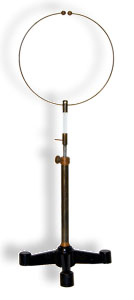
Early experimental Hertz transmitting apparatus
with "Hertz Resonator" detector
c. 1890 |
|

Untersuchungen Ueber Die
Ausbreitung Der Elektrischen Kraft
(Investigations on the Propagation of Electrical Energy)
Heinrich Hertz
1892
|
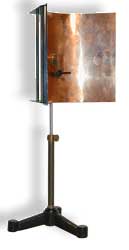
Righi Detector
c. 1897 |
|
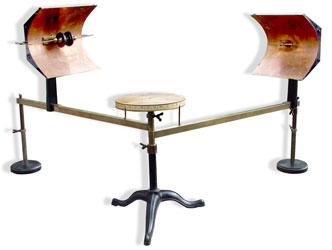
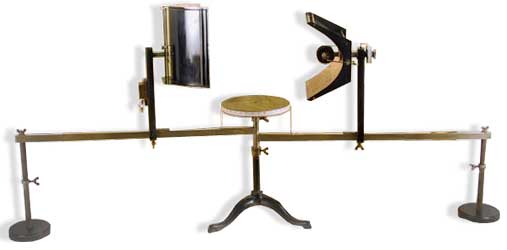
Righi Hertzian-wave Test Bench
(Italian)
c. 1895
This test bench
was adapted from an optical bench of the time and designed for use
as a tool to investigate the new phenomena known as "Hertzian
waves". It contains a Righi spark gap on the right side, and a
Branly style coherer on the left. The apparatus has many calibrated
adjustment points necessary for scientific analysis.
|
|
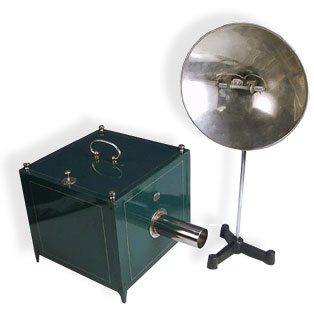
Max Kohl Spark Transmitter (Bose design) and Coherer Receiver
(German)
1900 |
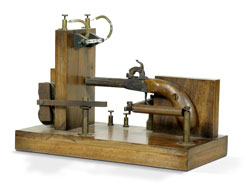
Early "Pistol" Coherer
(Italy) |
|
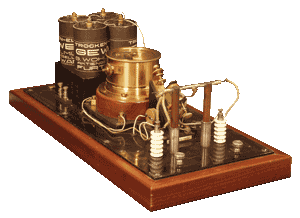
Meiser & Mertig Coherer Receiver
(German)
c. 1900 |
|
The
Wireless Age
In 1901, Guglielmo
Marconi successfully communicated the Morse code letter "S" across
the Atlantic ocean and captured the imagination of the world. No
longer just a scientific curiosity, Hertzian waves held great
promise as a flurry of development took place that would turn sparks
into cash. The big business of radio had begun. |
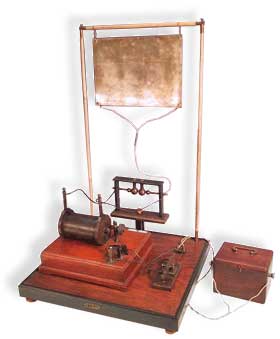
Early Reproduction of one
of Marconi's
earliest experimental transmitters |
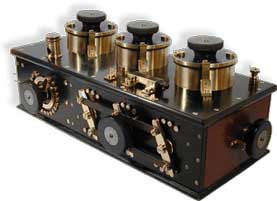
Marconi Multiple Tuner
c. 1910 |
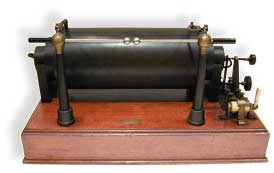
Marconi 10" Spark Coil
c. 1910 |
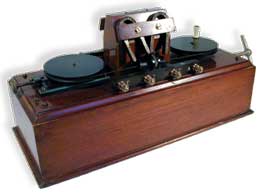
Marconi Magnetic Detector
1902 - 1914 |
|
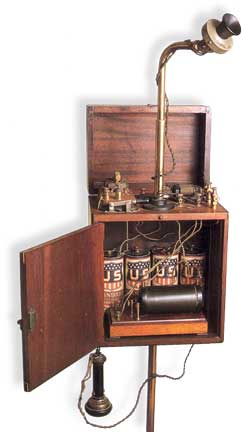
Collins Wireless Telephone
Inductive Model - 1909 |
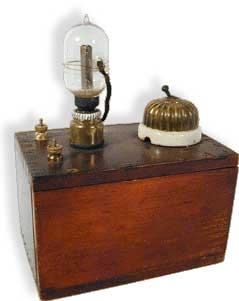
Fleming Valve
c. 1910. |
|
Radio Enters
the Home
Crystal Radios |
|
Radio Enters
the Home
Battery Radios |
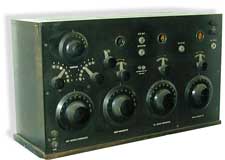
Grebe CR-6
1920 |
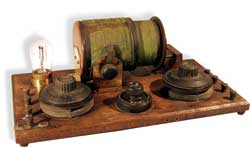
A.C. Gilbert Model 4018
1923 |
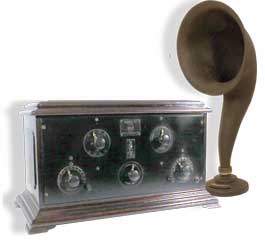
Radiola VII
1923 |
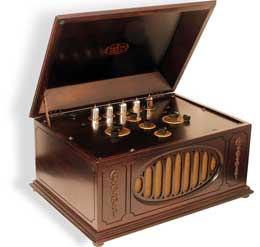
Radiola VII-B
1924 |

Atwater Kent Model 5
1923 |
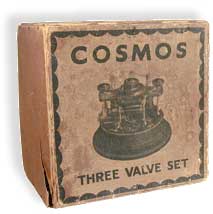 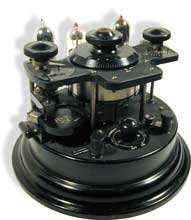
Cosmos VR4
(open)
1925 |
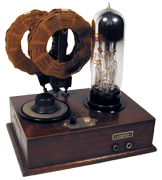 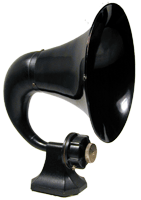
Loewe Model OE 333
(German)
1926 |
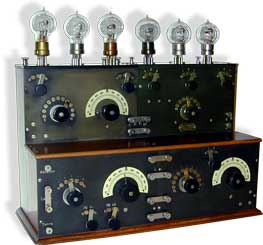
Ducretet "Piano" 6 valve
1923 |
|
Radio Enters
the Home
Loudspeakers |
|
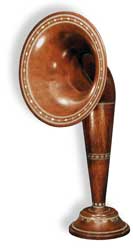
RCA Sarnoff Speaker
1924 |
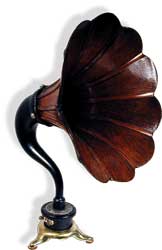
Amplion
"Swan Neck"
AR15
1923
|
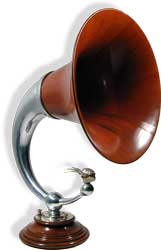
Brown Type Q
(British)
1924
|

Brown Type H1
(British)
1922 |
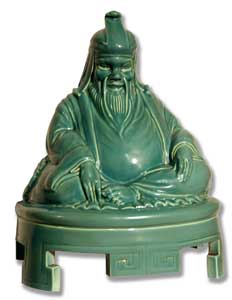
Doulton & Co.
Andia Persian King
1927
(British)
|
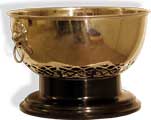
British Electric Sales Org
Beco Rose Bowl
1926
(British) |
|